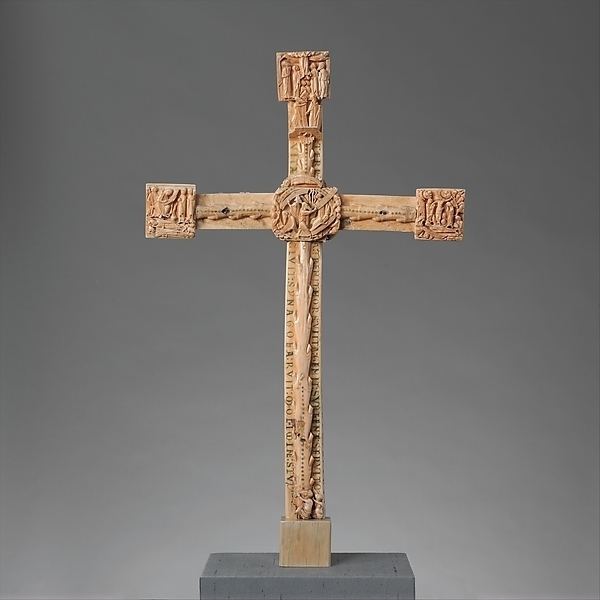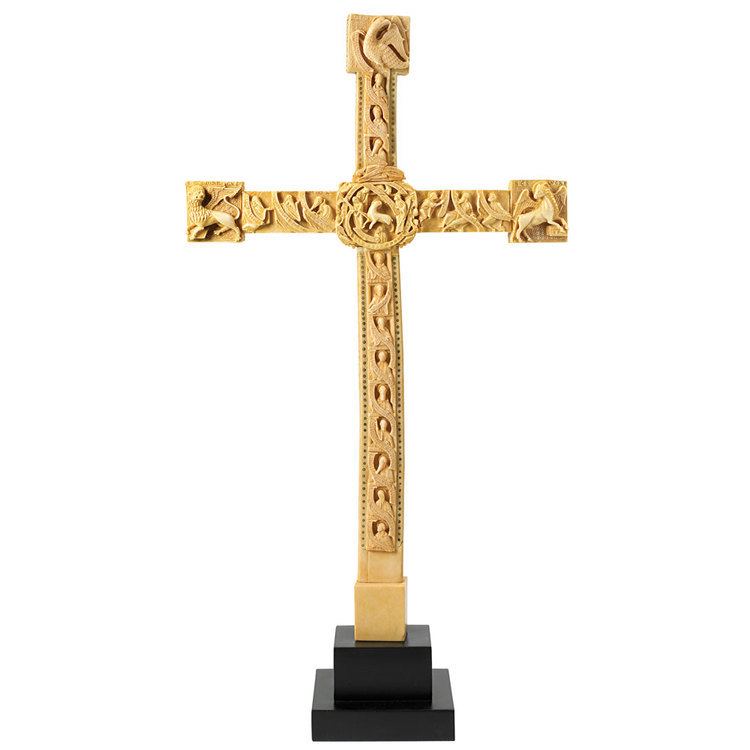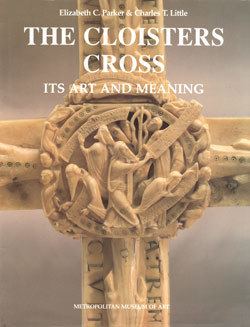 | ||
Similar Enthroned Virgin and Child, The Hunt of the Unicorn, Mérode Altarpiece, Rood, Lewis chessmen | ||
The Cloisters Cross, also referred to as the Bury St Edmunds Cross, is an unusually complex 12th century ivory Romanesque altar cross in The Cloisters, part of the Metropolitan Museum of Art in New York. The cross is carved from walrus ivory and measures 22 5⁄8 × 14 1⁄4 in. (57.5 × 36.2 cm).

The carvings which cover both front and back sides include ninety-two intricately carved figures and ninety-eight inscriptions. The figures, each of which is only about one-half inch tall, illustrate a number of Biblical scenes, and on the back a number of the Old Testament prophets with banderoles containing quotations from their books. There is debate over whether or not these inscriptions are chosen with an anti-Semitic intent. The Metropolitan website currently says: "Prominent among the inscriptions are several strong invectives against Jews. Though it is impossible to know precisely who commissioned this piece and with what aims, the cross certainly offers some indication of the anti-Semitism prevalent in England at this time. Indeed, by the end of the thirteenth century, Jews were expelled from the country". This theme was developed in a book by Thomas Hoving, the curator involved when the Metropolitan acquired the cross, and later Director. This was unkindly described in an academic review of Parker and Little as "an autobiographical romance ... written in Raymond Chandler style".

Elizabeth C. Parker and Charles T. Little, in a book also published by the Metropolitan, disagree with Hoving and think that it is doubtful that the cross, a sophisticated theological object, was specifically designed for the purpose of either castigating or converting any member of the small Jewish population in England in the mid-twelfth century.
The sculptor is not known. Thomas Hoving, who managed the acquisition of the cross while he was Associate Curator at The Cloisters, concluded that it was carved by Master Hugo at the Bury St Edmunds Abbey in Suffolk. However, there is no certain evidence to suggest that the cross was even made in England, although this is accepted by most scholars, and other places of origin such as Germany have been proposed.

The history of the cross before it was acquired by Ante Topić Mimara is unknown. He sold it to the Metropolitan Museum in 1963. The British Museum was also keen to buy the cross, but they eventually declined, because Topić Mimara steadfastly refused to provide proof that he had full title to sell the cross. Hoving reportedly sat up drinking coffee with Topić Mimara until after midnight on the night that the British Museum's option lapsed, and he purchased the cross immediately afterwards for GBP£200,000.
